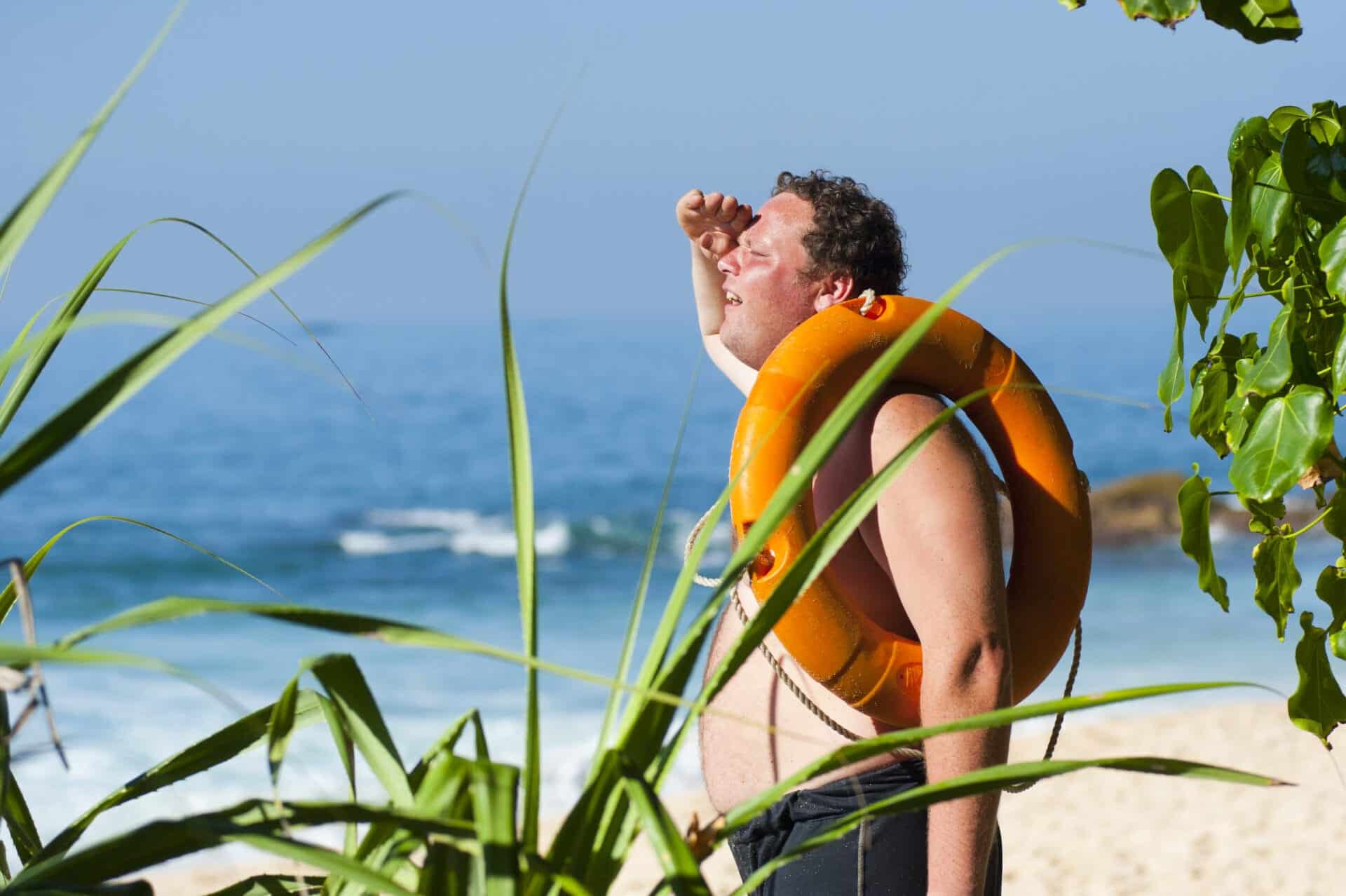Having a hot tub can be a great way to relax and unwind after a stressful day. However, one of the more common problems that hot tub owners experience is green water. Green water in hot tubs is caused by bacteria and algae growth, which often occurs when the water chemistry is unbalanced or the filter needs to be cleaned. Fortunately, there are several steps you can take to get rid of green hot tub water and keep it looking clear and clean. In this article, we’ll explore why your hot tub water may be green, how to fix it, and how to prevent it from happening again.One of the most common reasons why hot tub water may be turning green is due to the presence of algae in the water. Algae spores are found in most bodies of water, including your hot tub, and if allowed to grow unchecked, can cause the water to become cloudy and even take on a greenish tint. Other potential causes for green hot tub water include high levels of copper, an imbalance in pH or alkalinity levels, or a high amount of organic debris or dirt in the water.
Common Causes of Green Hot Tub Water
Green hot tub water can indicate an issue with the chemical balance of your water. The most common cause is too much chlorine or other sanitizing chemicals, as this can lead to a buildup of algae in your hot tub. Poor maintenance and inadequate cleaning can also contribute to algae growth. Other causes of green hot tub water include chemical imbalances, excessive metals, and high levels of organics.
Chlorine is a chemical used to kill bacteria and other microorganisms in hot tubs. When too much chlorine is added to the water, it can lead to an increase in algae growth. Algae will cause your hot tub to turn green as it grows in the warm water. If you notice that your hot tub water has turned green, check the chlorine level first as this is usually the culprit.
Poor maintenance and inadequate cleaning of your hot tub can also contribute to an increase in algae growth. Make sure that you are regularly cleaning out your filters and draining and refilling your hot tub on a regular basis. You should also be sure to keep your pH levels balanced, as this will help prevent algae from growing.
Chemical imbalances can also lead to green hot tub water. If there are too many metals or organics such as oils or lotions present in the water, it can cause an imbalance which may allow for algae growth. Testing for these elements regularly will help ensure that they remain at safe levels.
Green hot tub water can be caused by a variety of different issues, so it’s important to identify the root cause so that it can be addressed quickly and effectively. Checking the chlorine level, maintaining proper pH levels, and testing for metals and organics are all essential steps towards preventing green hot tub water from occurring.
Preventing Hot Tub Water from Turning Green
Hot tubs are a great way to relax and enjoy the outdoors. However, if not properly maintained, hot tub water can turn green. This is usually caused by an overgrowth of algae in the water. Fortunately, there are some steps that can be taken to prevent hot tub water from turning green.
The first step in preventing hot tub water from turning green is to make sure the pH levels of the water are balanced. The ideal pH level for hot tubs is between 7.2-7.6. If the pH level is too high or too low, it can cause an imbalance in the water, leading to algae growth. To keep pH levels balanced, use a pH tester and adjust as needed.
The second step is to keep up with regular maintenance of your hot tub. This includes cleaning and replacing filters regularly, as well as scrubbing down any surfaces that may have come into contact with the water. Doing this will help prevent any dirt or debris from building up in the hot tub and becoming a breeding ground for algae.
Finally, it’s important to make sure there is proper circulation in your hot tub at all times. Make sure there are no areas of stagnant water that could lead to an algae bloom. It’s also important to keep the temperature of your hot tub between 80-100 degrees Fahrenheit, as this will help prevent algae growth.
By following these steps, you can help ensure that your hot tub stays clean and free of any green or murky water caused by algae growth. Proper maintenance and attention will go a long way towards keeping your hot tub looking its best!
Different Types of Algae Growing in Hot Tub Water
Hot tubs can be a great source of relaxation and fun, but they can also become a breeding ground for algae. Algae are microscopic organisms that can grow in many different places, including hot tubs. In order to keep your hot tub clean and healthy, it is important to understand the different types of algae that may be present in your hot tub water.
There are three main types of algae that commonly grow in hot tubs: green algae, mustard algae, and black algae. Green algae are characterized by their bright green color and slimy texture. This type of algae is most commonly found on the walls and floor of the hot tub. Mustard algae is yellow-green in color and can often be found on the walls as well as floating around in the water. Lastly, black algae are dark green or black spots that can form on the walls or floor of the hot tub.
Green and mustard algae typically form when there is an imbalance in the chemical levels of your hot tub water. This imbalance can occur if the pH levels become too high or if there is too much chlorine present. If this happens, it is important to test your water levels and adjust them accordingly to prevent further growth of these types of algae.
Black algae are more difficult to manage than green or mustard algae because they require more intense cleaning methods to remove them from your hot tub’s interior surfaces. Black algae tend to form when there is an abundance of organic matter such as leaves or dirt present in the water, so it’s important to regularly check your filters and clean them out when necessary. Additionally, you may need to use special cleaning products specifically designed for removing black algae from your hot tub’s walls, floor, and steps if necessary.
It is important to remember that all types of algal growth should be addressed as quickly as possible since they will only spread further if left unchecked. Regularly testing your water’s pH levels will help you stay ahead of any potential algal growth while also helping you maintain a healthy environment for you and your family to enjoy!
Identifying the Type of Algae Growing in Your Hot Tub
Algae growth in your hot tub can be troublesome, and it’s important to identify the type of algae in order to treat it properly. Algae is a plant-like organism that can turn your hot tub water murky and green. To get rid of it, you need to know what type of algae you’re dealing with, so here are some tips on how to do that.
The first step is to take a sample of the water in your hot tub and examine it under a microscope. Different types of algae have distinct shapes and colors, so you should be able to identify the type by looking at them. For example, green algae are usually round or oval-shaped and can range from light to dark green in color. Black algae often look like small black spots, while pink or orange algae usually appear stringy or slimy.
Another way to tell what type of algae is growing in your hot tub is by testing the chemistry of the water. Different types of algae thrive under different conditions, so testing for pH levels, alkalinity, and other factors will help you determine what kind of environment the algae is growing in. If the pH level is too high or low for certain types of algae, chances are that’s not what’s growing in your hot tub.
Finally, if all else fails you can always consult an expert who specializes in identifying types of algae or who has experience dealing with them. They should be able to provide you with a detailed analysis and treatment plan based on what they find in your hot tub. By identifying the type of algae growing in your hot tub, you’ll be one step closer to getting rid of it for good!

Test the Water
The first step to treating green hot tub water is to test it. You will need to test the pH, alkalinity, calcium hardness, and total dissolved solids (TDS) levels of the water. You can use a test strip or a liquid reagent kit to get accurate readings. It is important to test the water regularly so that you can identify any problems before they become serious. Once you have tested the water and identified any issues, you can begin treating it.
Balance the Chemistry
Once you have tested the water, you will need to adjust the chemical balance of your hot tub. This involves adjusting the pH, alkalinity, and calcium hardness levels so that they are within an acceptable range. You may need to add chemicals such as chlorine or bromine in order to achieve this balance. It is important to use only chemicals that are specifically designed for hot tubs in order to avoid damaging your spa.
Shock Treat the Water
Once you have balanced the chemistry of your hot tub, it is time to shock treat it. This involves adding a large dose of sanitizer such as chlorine or bromine in order to eliminate any bacteria or algae that may be present in the water. It is important not to overdo it; too much shock can damage your spa filters and equipment. After shocking the hot tub, you should wait at least 24 hours before using it again.
Run Your Filters
Once you have shocked and balanced your hot tub’s chemistry levels, it is time to run your filters for several hours each day for at least a week in order to remove any organic contaminants from the water. This will help keep your hot tub clean and free from bacteria and algae growth.
Add Clarifiers
After running your filters for several days, you may want to add clarifiers in order to further improve water clarity. Clarifiers contain polymers which attach themselves onto small particles and debris in the water which makes them easier for your filter system to remove. Make sure you follow all instructions carefully when using clarifiers.
Maintain Proper Water Levels
Finally, make sure that you maintain proper water levels at all times in order ensure optimum performance of your spa system. Keep an eye on pH and alkalinity levels as well as temperature throughout this process and adjust them accordingly if necessary. With proper maintenance and care, you should be able enjoy crystal clear hot tub waters again soon!
Controlling Algae Growth in Your Hot Tub
Algae growth in your hot tub can be a nuisance. It not only makes the tub look dirty, but it can also cause skin irritation and other problems. Fortunately, there are steps you can take to prevent and control algae growth in your hot tub.
The first step is to keep the water clean and balanced. This includes regularly testing the pH levels and adding chemicals as needed. Make sure to use a chlorine-based or bromine-based sanitizer to keep the water free of bacteria and algae. You should also shock your hot tub on a regular basis to help kill any algae that may have formed.
It is also important to clean the walls of your hot tub regularly. Algae can form on any surface that is exposed to moisture and sunlight, so it is important to remove any organic matter from the walls of your hot tub each time you clean it. You can use a brush or vacuum cleaner for this task, depending on how much debris has accumulated on the walls of your hot tub.
Finally, you should try to limit the amount of sunlight that hits your hot tub each day. Algae loves sunlight, so by keeping your hot tub covered when not in use, you can reduce its exposure to direct sunlight and help prevent algae growth in the future.
By taking these steps, you can help control algae growth in your hot tub and keep it looking clean and inviting all year long!
Sanitizing and Shock Treatments for Green Hot Tub Water
Green hot tub water is a common problem that can occur due to a number of reasons including excess organic matter, low levels of chlorine or bromine, and high pH levels. A sanitizing and shock treatment is recommended to help clear the green water and prevent any further build-up of organic matter. Sanitizing involves adding chlorine or bromine to the hot tub water to kill off any bacteria or algae present. Shock treatments are also used to oxidize any organic matter that has built up in the water and help keep it clear. The shock treatment should be done at least once a month, or more often if necessary.
Before beginning the sanitizing and shock treatments, it is important to balance the pH levels in the hot tub water. The ideal range for pH levels is between 7.2 and 7.8, so test strips should be used to check these levels before treating the water. If there is too much acidity in the hot tub water, add baking soda while stirring until desired level is achieved.
Once the pH levels are balanced, it’s time to start sanitizing with chlorine or bromine chemicals. Start by adding one pound of granular chlorine per 500 gallons of water, then test again after 24 hours with a test strip to check for proper sanitizer level which should be between 1-3 ppm (parts per million). If needed, add more chlorine until desired level is achieved. After this step, it’s time for shocking with a non-chlorine oxidizer such as potassium monopersulfate (MPS). This type of oxidizer will quickly reduce any cloudiness caused by organic matter in the hot tub water within 30 minutes. Add one pound of MPS per 500 gallons of water and let circulate for at least 30 minutes before testing again with a test strip for proper oxidation level (should be between 2-4 ppm).
After both steps have been completed, ensure that all equipment is functioning properly and that filters have been cleaned thoroughly before turning on jets and allowing guests back into your hot tub facility. With proper maintenance practices like regular cleaning and sanitizing/shocking treatments, you can ensure your guests are bathing in clean and safe green free hot tubs!

Conclusion
Green hot tub water is caused by an increase in algae growth due to the introduction of nutrients from bathers, debris, and other sources. To prevent green hot tub water, it is important to maintain a proper chlorine or bromine level in the hot tub. In addition, it is important to check the pH levels regularly and adjust them if necessary. Hot tub covers should also be kept on when not in use to limit environmental influences on the water. Regular cleaning of the filter and emptying of the strainer can also help stop algae growth.
Ultimately, if you want to keep your hot tub water crystal clear, prevention and maintenance are key. With regular cleaning and proper chemical balance, you can enjoy your hot tub without worrying about green water.

